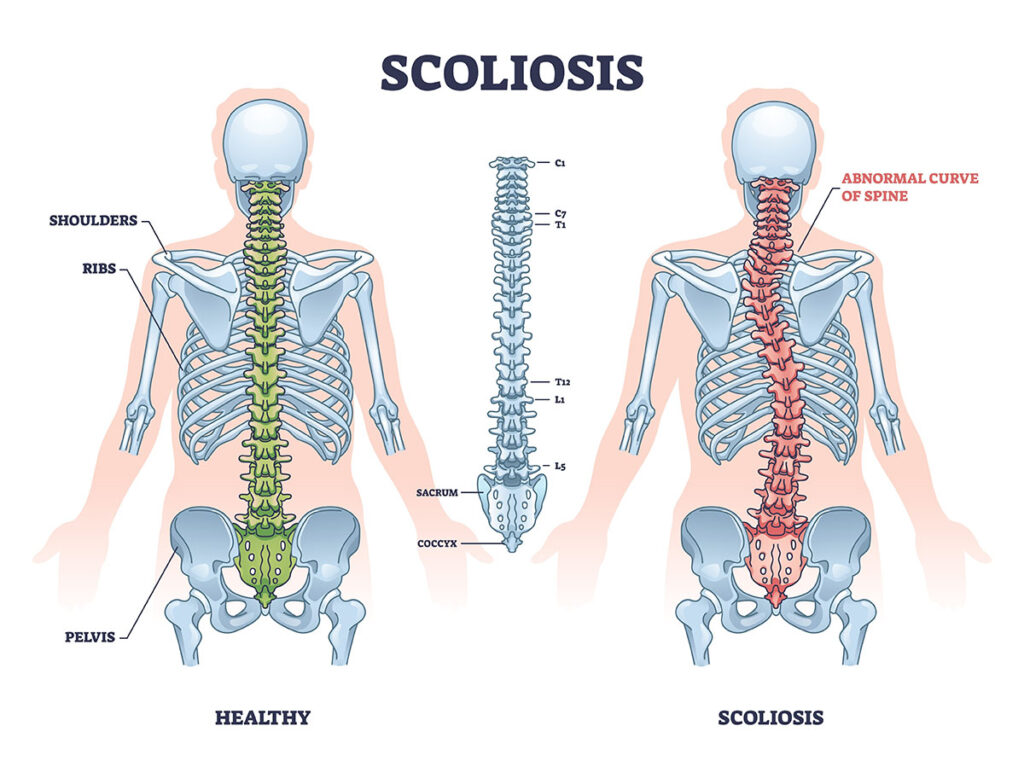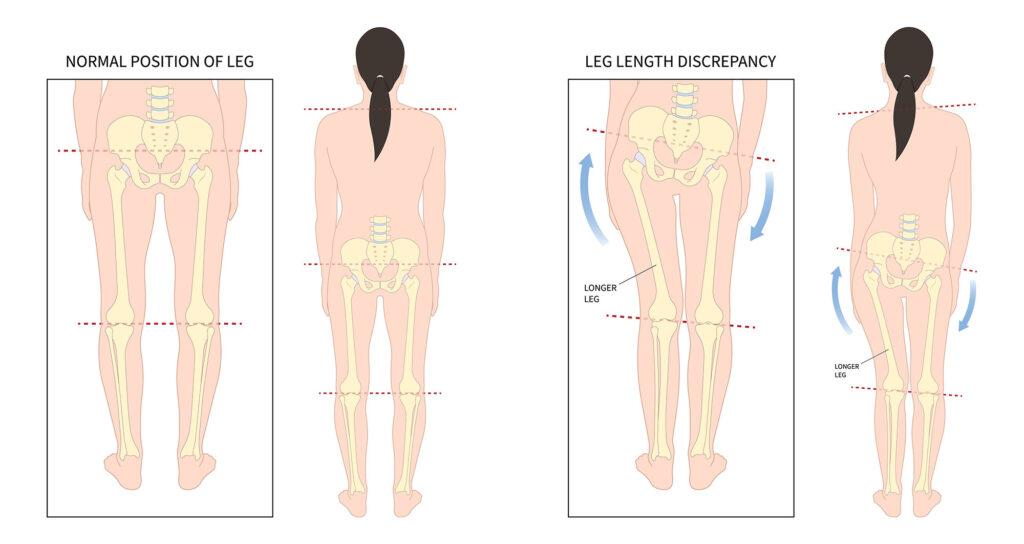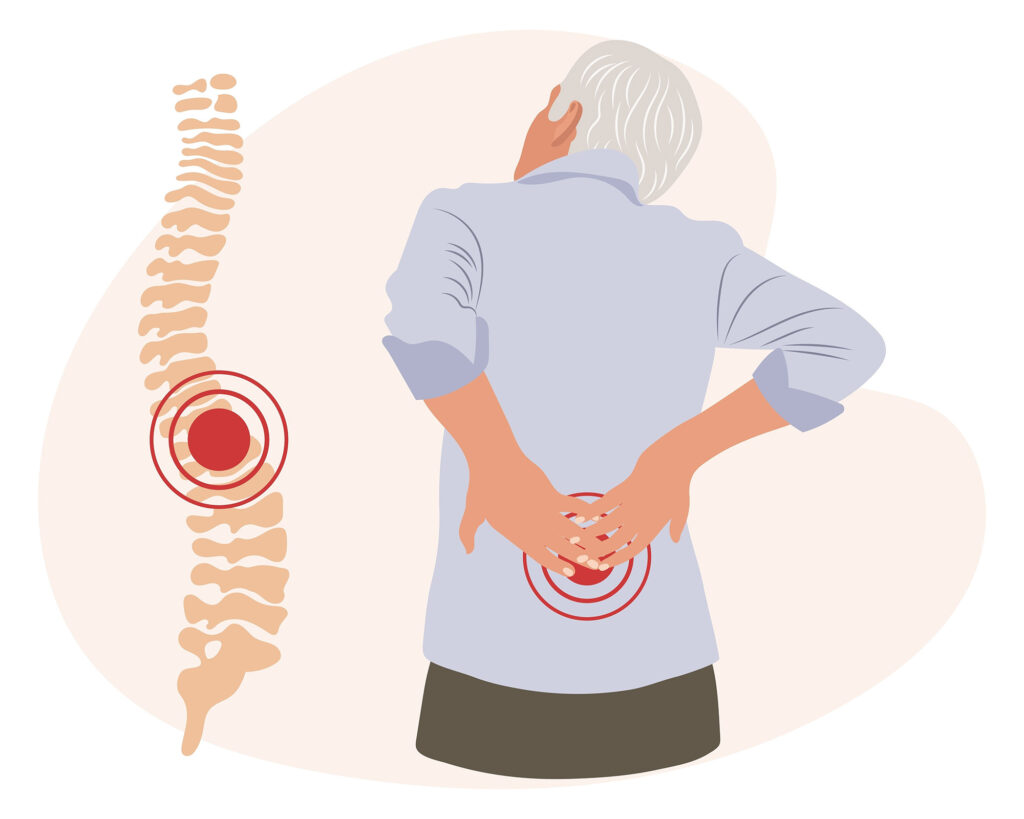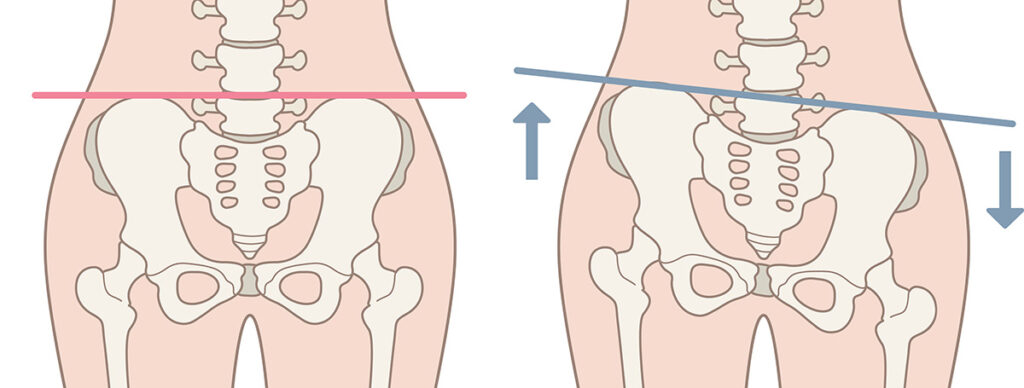Scoliosis, a complex spinal condition, is characterised by a lateral curvature of the spine, often taking an “S” or “C” shape. This abnormal curvature affects not only spinal alignment but can also lead to muscular imbalances, postural issues, and even discomfort or pain in the torso and lower back.

Scoliosis may develop due to various underlying conditions, including Short Leg Syndrome, Congenital Scoliosis, Idiopathic Scoliosis, Neuromuscular Scoliosis, and Trauma. Each type of scoliosis presents distinct characteristics and often requires individualised management.
Osteopathic care, as practiced at Riverside Wellness Centre, plays a valuable role in managing scoliosis by working to restore joint function, relieve muscle tension, and improve alignment. Through an osteopathic approach, patients can experience improved mobility, strength, and overall spinal health, which may reduce the progression or severity of scoliosis.
Short Leg Syndrome, or Leg Length Discrepancy (LLD), can contribute to scoliosis by causing the pelvis to tilt asymmetrically, which places uneven pressure on the spine. Over time, the uneven weight distribution may result in compensatory curvature in the lumbar or thoracic spine.

– Causative Factors: Leg length discrepancy may stem from anatomical differences (structural LLD) or functional issues such as muscle imbalances, hip alignment, or postural habits.
– Signs and Symptoms: Individuals may experience back, hip, and knee pain, along with noticeable differences in hip height or the length of each leg. The spine often curves to compensate for the uneven pelvic alignment, creating a scoliotic curve.
– Diagnostic Tests: X-rays, standing leg length assessments, and pelvic evaluations are common tools to assess leg length discrepancy and its impact on spinal alignment.
– Treatment: Osteopaths and chiropractors may recommend orthotics or heel lifts for structural LLD. Functional LLD may benefit from corrective exercises, muscle strengthening, and manual adjustments to restore alignment and relieve strain.
Congenital scoliosis arises from abnormal vertebral development in utero, leading to curvature that becomes noticeable as the child grows. This type of scoliosis may worsen rapidly during growth spurts.
– Causative Factors: Congenital scoliosis is a result of malformed vertebrae or partial vertebral fusion during fetal development.
– Signs and Symptoms: Often diagnosed early in life, congenital scoliosis may present with uneven shoulders, an abnormal rib cage shape, or asymmetrical body contours. In severe cases, children may experience breathing difficulties if the rib cage is compressed.
– Diagnostic Tests: Pediatricians and osteopaths can identify congenital scoliosis through physical exams and imaging studies, such as X-rays or MRI, to view the spinal structure in detail.
– Treatment: Treatment may range from monitoring to bracing, depending on severity. Osteopathic care can support children with congenital scoliosis by helping improve spinal flexibility, relieve muscular tension, and ensure optimal function and comfort.
Idiopathic scoliosis, the most common form of scoliosis, is a term used when no definitive cause is found. It typically appears in children and adolescents, particularly during puberty, and can progress if left untreated.
– Causative Factors: The exact cause remains unknown, although genetics, hormonal factors, and rapid growth spurts are thought to play a role.
– Signs and Symptoms: This form of scoliosis often causes a noticeable rib hump, uneven shoulders or hips, and sometimes back pain.
– Diagnostic Tests: Physical examinations, Adam’s forward bend test, and imaging techniques such as X-rays help measure the angle of spinal curvature.
– Treatment: Early detection is key. Osteopathic interventions, including manual adjustments, myofascial release, and strengthening exercises, can help reduce muscle imbalances, improve flexibility, and potentially slow curve progression. In severe cases, bracing or surgical options may be required.
Neuromuscular scoliosis is associated with conditions affecting nerve and muscle function, such as cerebral palsy, muscular dystrophy, or spinal muscular atrophy. The impaired muscle control often results in spinal curvature.
– Causative Factors: Conditions that weaken or imbalance the muscles supporting the spine are primary contributors.
– Signs and Symptoms: People with neuromuscular scoliosis often have postural issues, limited mobility, and may experience progressive worsening of the curve over time.
– Diagnostic Tests: Physicians assess scoliosis alongside the neuromuscular condition, using imaging techniques to monitor curve progression.
– Treatment: Osteopathic care can improve flexibility, decrease muscle tension, and alleviate discomfort in patients with neuromuscular scoliosis. Strengthening and stretching exercises are particularly valuable, targeting the scoliotic convexity and concavity to improve functional alignment.
Scoliosis may also result from trauma, such as fractures or injuries that affect the spine’s structure, stability, or alignment.
– Causative Factors: Trauma-induced scoliosis may develop after accidents, falls, or sports injuries that damage vertebrae, muscles, or ligaments.
– Signs and Symptoms: Symptoms often include back pain, muscle stiffness, and uneven posture due to compensatory muscle tension around the injury.
– Diagnostic Tests: X-rays, CT scans, and MRIs help diagnose trauma-related spinal curvature and assess any underlying damage.
– Treatment: Osteopathic treatment for trauma-related scoliosis includes spinal adjustments, soft tissue manipulation, and rehabilitation exercises to strengthen the affected area and restore correct biomechanics.

Osteopathic care for scoliosis aims to enhance spinal health by addressing muscle and joint imbalances, restoring alignment, and alleviating any discomfort. Riverside Wellness Centre takes an individualised approach, using a combination of manual therapy, strengthening, and flexibility exercises tailored to each patient’s unique needs.
Osteopathic adjustments focus on realigning vertebrae and reducing asymmetrical joint function. These adjustments aim to optimise mobility and relieve pain caused by restricted movement. Correct alignment reduces the spine’s tendency to curve, easing muscle strain and improving overall posture.
Osteopathic care also works to normalise the tone of muscles, tendons, and ligaments surrounding the spine. Through techniques like myofascial release, trigger point therapy, and gentle stretching, osteopaths target areas of hypertonicity (tightness) and loosen them to improve comfort and range of motion. This approach also encourages a balanced, supportive structure around the spine.
Targeted exercises are integral to scoliosis care, focusing on strengthening the muscles on the convex (outward) side of the curve while stretching the concave (inward) side. Strengthening exercises build resilience in overstretched muscles, while stretching exercises release tension on the compressed side, encouraging a balanced posture and movement pattern.
Beyond spinal adjustments, osteopaths work to improve the entire kinetic chain by addressing other key joints, such as the hips and pelvis, which influence spinal health. By ensuring that all connected structures are functioning correctly, osteopathic care improves the spine’s biomechanics, enabling smoother, more symmetrical movement patterns.

Osteopathic philosophy acknowledges the connection between organ health and musculoskeletal function. Tight or imbalanced organs, especially within the abdomen, can contribute to postural distortions. Osteopaths may use gentle visceral manipulation techniques to relax overly tight organs, which can indirectly support spinal health and decrease any compensatory muscle tension.
Scoliosis can be a challenging condition to manage, but with early intervention and a comprehensive approach, its progression and symptoms can be managed effectively. At Riverside Wellness Centre, osteopathic care is centred on promoting proper alignment, reducing muscular imbalances, and restoring biomechanics, helping those with scoliosis live with less pain and more freedom of movement. Through personalised, hands-on care, individuals with scoliosis can achieve better spinal health and long-term wellness.
For professional scoliosis management in Ballina and the Northern Rivers region, reach out to Riverside Wellness Centre to learn how osteopathic care may provide relief. Dr Zac Hakes (Osteopath) and the team are here to support your journey towards a healthier, stronger spine.